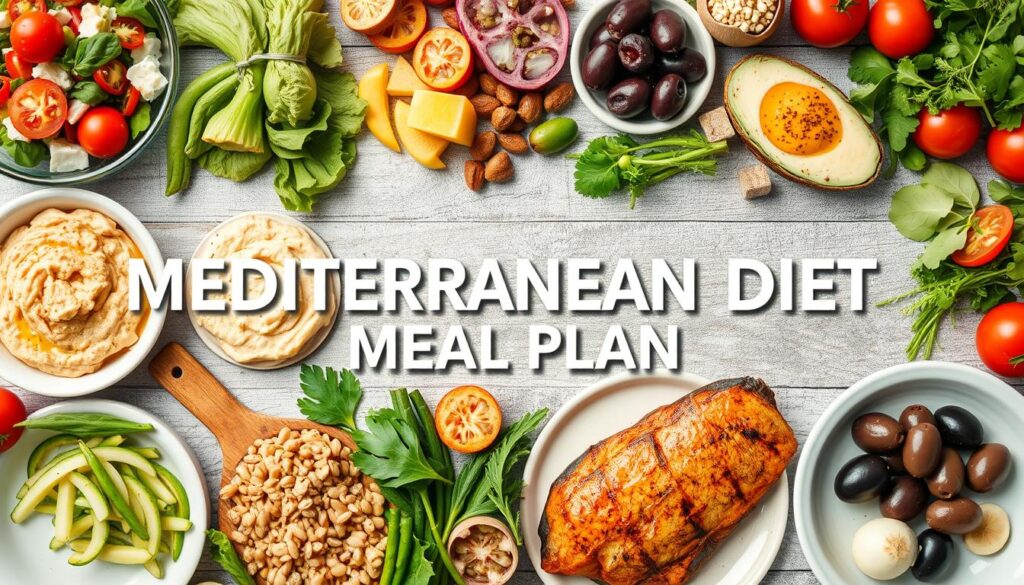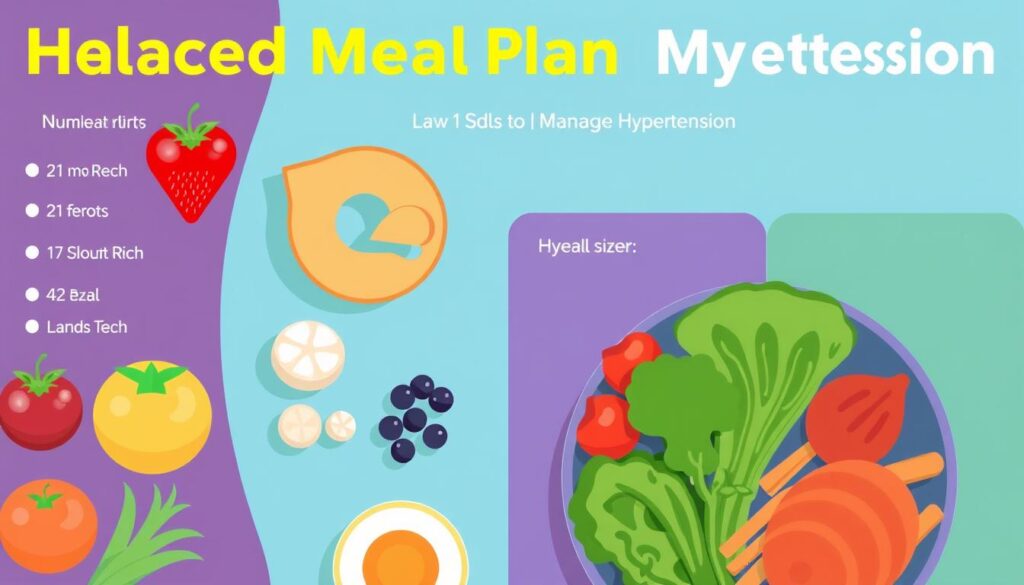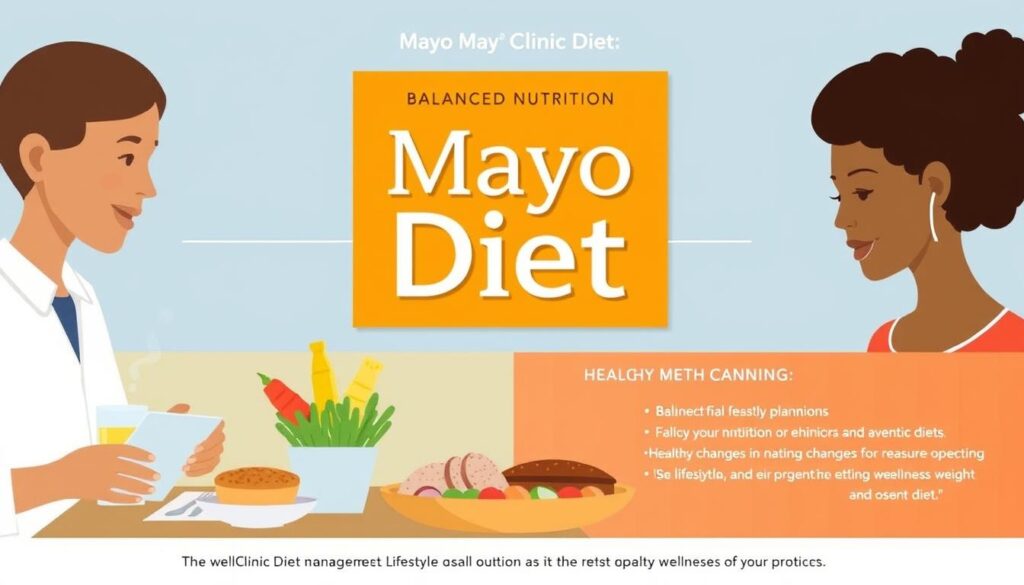Embarking on a journey to a healthier lifestyle begins with understanding the importance of a well-balanced diet. With numerous options available, finding the right diet plan can be overwhelming, yet it’s a crucial step towards achieving your weight and overall health goals.
A healthy diet plan is not a one-size-fits-all solution; it’s a personalized approach that considers your individual health needs, lifestyle, and food preferences. The best plans are those that promote sustainable eating habits and contribute to overall wellness, rather than just focusing on weight loss.
This comprehensive guide will explore various popular diet plans, their benefits, and how to determine which one might work best for you. From the Mediterranean diet to intermittent fasting, each offers a unique approach to healthy eating.
Key Takeaways
- Understanding your individual health needs is crucial in choosing a diet plan.
- A good diet plan promotes sustainable eating habits and overall wellness.
- Popular diet plans include the Mediterranean diet and intermittent fasting.
- The right diet plan is a personalized approach, not a one-size-fits-all solution.
- Focus on overall health and wellness, not just weight loss.
Understanding the Importance of a Healthy Diet
Adopting a healthy diet is crucial for overall well-being. A well-balanced diet not only aids in weight loss but also improves overall health. Many diets offer benefits that go beyond weight loss, improving overall health and body functions.

How Diet Affects Overall Health
A healthy diet significantly impacts overall health. Nutrient-dense foods improve bodily functions, enhancing energy levels and overall vitality. A balanced diet helps regulate bodily processes, supporting a healthy body.
Beyond Weight Loss: Other Benefits of Healthy Eating
Healthy eating offers numerous benefits beyond weight loss. It improves cognitive function, potentially reducing age-related cognitive decline. A healthy diet promotes a clearer complexion, slows signs of aging, and regulates hormones affecting stress response and reproductive health. Anti-inflammatory foods reduce joint pain and improve mobility.
Factors to Consider When Choosing a Diet Plan
The key to a successful diet lies in understanding your personal needs and goals. When selecting a diet plan, it’s essential to consider several factors that can impact your long-term success.
Personal Health Goals and Needs
Understanding your personal health goals is crucial. Whether you’re aiming for weight loss or overall health improvement, your diet plan should align with your objectives. Consider your nutritional needs and how different foods affect your body.
Lifestyle Compatibility
A diet plan that fits your lifestyle is more likely to succeed. Consider your daily routine, eating habits, and preferences to ensure your diet plan is realistic and sustainable. This compatibility is key to maintaining a healthy weight.
Sustainability and Long-term Success
Sustainability is vital for long-term success. Extreme or highly restrictive diets often lead to weight regain. A successful diet plan should allow for flexibility and occasional indulgences, promoting a positive relationship with food. Simpler plans with fewer rules tend to have better compliance rates.

The Mediterranean Diet

The Mediterranean diet, rich in antioxidants and healthy fats, has been associated with reduced risk of chronic diseases. This dietary pattern emphasizes minimally processed foods and plants, promoting overall well-being.
Key Components and Food Groups
The Mediterranean diet focuses on whole grains, fruits, vegetables, and healthy fats, such as those found in olive oil. It also includes moderate amounts of dairy products, fish, and poultry.
Health Benefits and Weight Loss Potential
Studies have shown that the Mediterranean diet can aid in weight loss and reduce the risk of heart disease. Its emphasis on antioxidant-rich foods helps combat inflammation and oxidative stress.
Who It Works Best For
The Mediterranean diet is particularly beneficial for individuals with elevated cardiovascular risk factors or a family history of heart disease. It works well for those who enjoy cooking and appreciate fresh, minimally processed foods. This diet is also ideal for families, as its principles can be applied to meals that appeal to various age groups.
Additionally, the Mediterranean diet is suitable for individuals who prefer gradual, sustainable lifestyle changes. It’s also adaptable for vegetarians and those who limit animal products, making it a versatile eating plan.
The DASH Diet

Hypertension management through dietary changes is the core focus of the DASH diet. This eating plan is specifically designed to help individuals manage high blood pressure and improve overall cardiovascular health.
Structure and Recommended Servings
The DASH diet emphasizes whole grains, fruits, vegetables, lean proteins, and low-fat dairy. It recommends servings based on a 2,000 calorie diet, with adjustments for different calorie needs. The structure is designed to be flexible and adaptable to various lifestyles.
Benefits for Blood Pressure and Heart Health
The DASH diet has been shown to reduce blood pressure levels and several heart disease risk factors. By focusing on nutrient-dense foods, it helps lower the risk of cardiovascular diseases and may also reduce the risk of certain cancers.
Weight Loss Effectiveness
Studies have demonstrated that the DASH diet can help individuals lose weight. By emphasizing high-fiber, nutrient-dense foods, it promotes satiety with fewer calories. Research has shown that participants on the DASH diet lost more weight over 8-24 weeks compared to those on a control diet.
Plant-Based and Flexitarian Diets

Adopting a plant-based or flexitarian diet can be a transformative step towards a healthier lifestyle and a more sustainable environment. These diets focus on consuming a variety of whole, minimally processed foods, with an emphasis on fruits, vegetables, whole grains, and legumes.
Vegetarian vs. Vegan vs. Flexitarian Approaches
Understanding the differences between vegetarian, vegan, and flexitarian diets is crucial. Vegetarian diets exclude meat but may include dairy and eggs. Vegan diets exclude all animal products, while flexitarian diets are primarily vegetarian but occasionally include meat.
Health and Environmental Benefits
Numerous studies have shown that plant-based diets can significantly reduce the risk of chronic diseases, such as type 2 diabetes and heart disease. They also promote weight loss and improve metabolic health. Additionally, reducing meat consumption can lower greenhouse gas emissions and help preserve natural resources.
Ensuring Proper Nutrition
To ensure nutritional adequacy on a plant-based diet, it’s essential to pay attention to key nutrients like vitamin B12, iron, zinc, calcium, omega-3 fatty acids, and complete proteins. Consuming a variety of foods, including fortified products and a range of fruits and vegetables, can help meet these needs.
Key strategies include combining foods to achieve complete protein intake, consuming fortified plant milks and cereals, and considering supplementation when necessary, especially for strict vegans.
The MIND Diet

The MIND diet, a hybrid of Mediterranean and DASH diets, is specifically designed to promote brain health. By combining the beneficial elements of these diets, the MIND diet offers a comprehensive approach to reducing cognitive decline.
Combining Mediterranean and DASH Principles
The MIND diet merges the Mediterranean diet’s emphasis on healthy fats and the DASH diet’s focus on lowering blood pressure, creating a diet rich in nutrients that support brain health. This combination results in a dietary pattern that is high in vegetables, fruits, and whole grains.
Brain Health Benefits
Research has shown that the MIND diet can significantly reduce the risk of cognitive decline and Alzheimer’s disease. The diet’s emphasis on brain-healthy foods such as green leafy vegetables, berries, and nuts contributes to its neuroprotective effects.
Recommended Foods and Meal Structure
The MIND diet recommends consuming six or more servings of green leafy vegetables per week, along with other brain-healthy foods like berries, nuts, and whole grains. A typical meal plan might include a salad with spinach, berries, and nuts, accompanied by a dressing made with olive oil.
To follow the MIND diet, focus on incorporating the following foods into your meal plan:
- Six or more servings of green leafy vegetables per week, such as spinach and kale.
- Two or more servings of berries per week, particularly blueberries and strawberries.
- Five or more servings of nuts per week.
- Three or more servings of whole grains per day.
- Beans, fish, and poultry in moderation.
By structuring your meal plan around these recommendations, you can support brain health and potentially reduce the risk of cognitive decline.
WW (Weight Watchers)

WW, formerly known as Weight Watchers, offers a holistic weight loss program backed by extensive research. The program’s effectiveness in achieving and maintaining weight loss is well-documented.
The Points System Explained
The WW program uses a points system where foods are assigned point values based on their nutritional content. This system allows for flexibility in food choices.
Flexibility and Customization
WW offers a personalized approach to dieting, allowing members to tailor their meal plans according to their preferences and lifestyle.
Long-term Success Rates
Research has shown that participants in the WW program achieve significant weight loss and are more likely to maintain it over time. Studies have demonstrated that WW outperforms other commercial diet programs in terms of long-term weight management.
Many studies show that the WW program can help people lose weight. For example, a review of 45 studies found that those who followed a WW diet lost 2.6% more weight than those who received standard counseling.
Intermittent Fasting

Intermittent fasting is an eating pattern that cycles between periods of fasting and eating, offering numerous health benefits. This dietary approach has gained popularity for its potential to improve weight management and overall health.
Different Fasting Protocols
Various methods exist, including the 16/8 method, where one fasts for 16 hours and eats within an 8-hour window, and the 5:2 diet, where calorie intake is restricted to 500-600 calories on two non-consecutive days of the week. Other methods include alternate-day fasting and Eat-Stop-Eat.
Metabolic Benefits and Weight Loss Results
Intermittent fasting can lead to significant weight loss and improvements in metabolic health, including enhanced insulin sensitivity and reduced inflammation. These benefits are attributed to the body’s adaptation to using fat as a primary energy source during fasting periods.
Safety Considerations
While generally safe for most healthy adults, intermittent fasting may not be suitable for everyone, particularly those with certain medical conditions like diabetes, or those who are pregnant or breastfeeding. It’s crucial to consult with a healthcare professional before starting any fasting regimen, especially for individuals with health concerns.
To implement intermittent fasting safely, it’s recommended to start with shorter fasting periods and gradually increase the duration. Additionally, maintaining a balanced diet during eating windows is vital to ensure adequate nutrition.
The Volumetrics Diet

The Volumetrics Diet is centered around the concept of eating more food by volume while consuming fewer calories, making it a potentially more satisfying diet plan. Meals on this diet consist mostly of foods from categories one and two, with limited amounts of food from categories three and four. No foods are completely off-limits, and exercise is encouraged for at least 30-60 minutes each day.
Food Density Categories
Foods are categorized based on their calorie density. Category one includes very low-density foods like broth-based soups and salads, while category four includes high-density foods such as nuts and dried fruits. Understanding these categories helps in making informed dietary choices.
Satiety and Weight Management
The Volumetrics Diet aids in weight management by promoting satiety through the consumption of low-calorie density foods. This approach helps reduce overall calorie intake without leaving the dieter feeling hungry.
Meal Planning Strategies
Effective meal planning on the Volumetrics Diet involves incorporating a variety of low-calorie density foods. Strategies include adding extra vegetables to pasta dishes, using broth-based soups as starters, and modifying recipes to reduce calorie density.
To implement the Volumetrics Diet effectively, one can start by “pre-loading” with low-calorie density foods like salads or vegetable soup before main meals. Techniques such as substituting applesauce for oil in baking and incorporating more vegetables into mixed dishes can also be helpful. Additionally, structuring a day’s meals with sample meal plans and being mindful of nutrient intake can ensure success on this diet.
The Mayo Clinic Diet

Developed by experts at the renowned Mayo Clinic, this diet plan is designed to promote sustainable weight loss. The Mayo Clinic Diet is structured around two main components: a two-phase approach and the Mayo Clinic Healthy Weight Pyramid.
Two-Phase Approach
The diet follows a two-phase approach. The first phase, lasting two weeks, is designed to kickstart weight loss by introducing healthy eating habits. The second phase focuses on maintaining weight loss and adopting long-term healthy lifestyle choices.
The Mayo Clinic Healthy Weight Pyramid
The Mayo Clinic Healthy Weight Pyramid serves as a guide for making healthy food choices. It emphasizes the importance of vegetables, fruits, whole grains, and lean proteins.
Expected Results and Timeline
Users can expect to lose about 6-10 pounds during the first two weeks. In the second phase, a steady weight loss of 1-2 pounds per week is typical. The diet’s focus on high-fiber foods and healthy lifestyle choices can lead to significant weight loss and improved overall health.
Key Benefits: Improved energy, better sleep, reduced inflammation, and improved biomarkers like cholesterol and blood sugar levels.
The Mayo Clinic Diet not only aids in weight loss but also contributes to overall well-being by promoting healthy habits.
Low-Carb Diet Options

The world of low-carb diets is diverse, with various plans catering to different needs and preferences. Low-carb diets restrict your carb intake in favor of protein and fat, and they’re typically higher in protein than low-fat diets.
Keto, Atkins, and Other Variations
Popular low-carb diets include the ketogenic (keto) diet, Atkins diet, and low-carb, high-fat (LCHF) diet. The keto diet restricts carbs to under 10% of total calories, while other types may limit carbs to 30% or less.
Metabolic Effects and Weight Loss Potential
Low-carb diets can lead to significant weight loss and improved metabolic health. By reducing carb intake, the body shifts to burning fat for energy, potentially improving insulin sensitivity and reducing blood sugar levels.
Potential Challenges and Considerations
While low-carb diets can be effective, they can also come with challenges, such as the “keto flu” during the initial adaptation phase, potential nutritional deficiencies, and social challenges in a high-carb food environment.
Sample Meal Plans for Healthy Diet Plans
Developing a personalized meal plan can help you make healthier choices and stick to your diet. A well-structured meal plan provides the foundation for a balanced diet.
Daily Meal Structure
A typical day should include three main meals and one or two snacks, incorporating a variety of foods from all food groups. For a healthy diet, focus on whole grains, lean proteins, and a range of colorful vegetables.
Weekly Planning for Success
Planning your meals for the week ahead can help you stay on track and ensure you’re getting the nutrients you need. Consider your schedule and preferences when creating your meal plan, and don’t forget to include recipes that can be prepared in advance.
Budget-Friendly Options
Healthy eating doesn’t have to break the bank. By choosing affordable protein sources like beans and eggs, buying in bulk, and planning your meals around what’s on sale, you can stick to your diet without overspending. With a budget of £55 for two people, you can enjoy healthy, balanced meals.

Common Mistakes to Avoid When Following Diet Plans
To achieve lasting results, it’s essential to steer clear of common dieting mistakes that can derail even the best-laid diet plans. A well-rounded approach considers not just the foods you eat, but also your lifestyle and personal preferences.
Overly Restrictive Approaches
Diets that are too restrictive often lead to frustration and abandonment. It’s crucial to allow for flexibility in your meal planning to ensure long-term success.
Neglecting Nutritional Balance
A diet that lacks nutritional balance can have adverse health effects. Ensuring a variety of foods in your plan is vital for maintaining overall health.
Ignoring Personal Preferences and Lifestyle
Ignoring personal preferences, work schedules, and social factors can doom a diet plan to failure. It’s essential to choose an eating approach that fits your lifestyle.

Customizing your diet plan to fit your needs, including cooking skills and exercise habits, is key to achieving your health goals. By avoiding these common mistakes, you can create a sustainable and effective plan.
Conclusion: Finding Your Ideal Healthy Diet Plan
Finding the ideal diet can be a journey of trial and error, but understanding key principles can simplify the process. Successful healthy diet plans emphasize whole foods, appropriate portion control, and sustainable lifestyle changes rather than quick fixes. The “best” diet is one that an individual can maintain long-term while achieving their health goals and enjoying their food. Self-experimentation and personal assessment are crucial in finding the right dietary approach. Combining elements from different weight loss plans can create a personalized and effective strategy. Regular reassessment and adjustment of dietary approaches are necessary as health status and lifestyle change. Professional guidance from registered dietitians or healthcare providers can also be invaluable. By taking control of your eating habits and making informed choices, you can achieve your weight and weight loss goals.
